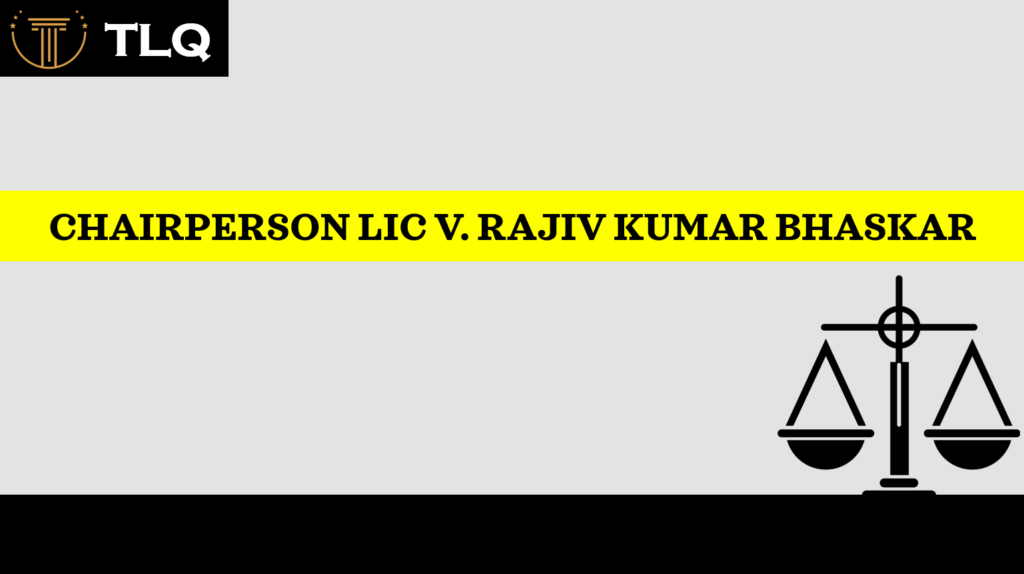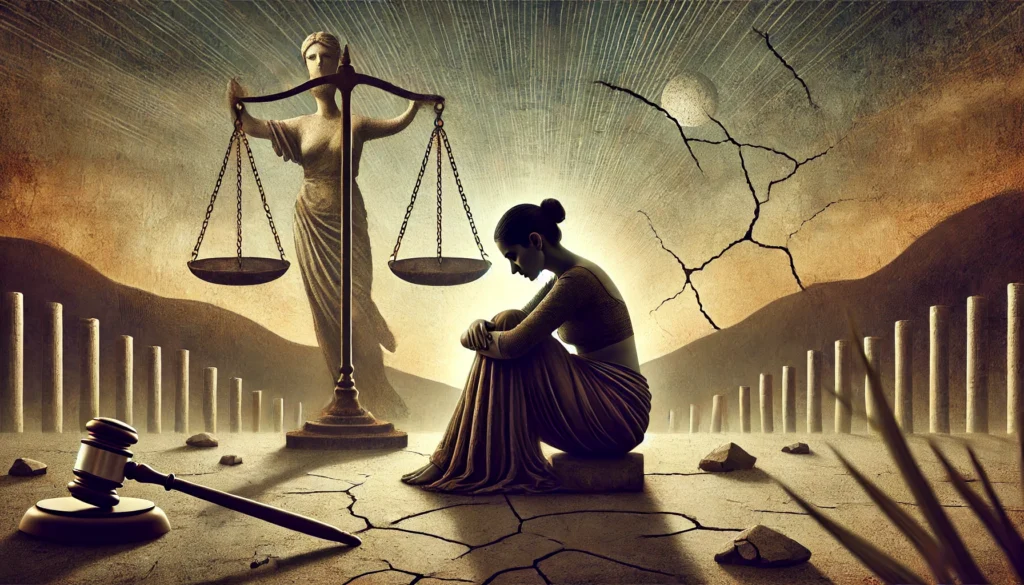Published On: 16th November, 2023
Authored By: Kriti Sharma
Administrative Coordination: Insights into Indian Constitution
INTRODUCTION
“The basic principle of federations is that the legislative and executive authority is partitioned between the centre and the states not by any law to be made by the centre, but by the constitution itself…The states are in no way dependent upon the centre for their legislature or executive authority. The states and the centre are coequal in this matter.[1]”
– Dr. B.R. Ambedkar
The preceding statement makes it abundantly clear that the Indian Constitution establishes a federal system as the basic structure of the country’s government. The constitution gives the union and the states their authority because it divides all powers – legislative, executive, and financial – among them. As a result, the states are not delegates of the union, but rather autonomous within the spheres allotted to them by the constitution. “The union and the states are also equally subject to constitutional limitations,”[2] for example, the exercise of legislative powers is limited by fundamental rights, and if any of these constitutional limitations are violated, the law of the legislature concerned is liable to be declared invalid by the courts.
GENESIS OF FEDERALISM IN INDIA
It is the result of powers being devolved to British provinces to ensure “provincial autonomy” under the 1919 Constitutional Reforms and the 1935 Government of India Act. It eventually culminated as part of the Cabinet Mission Plan and, later, as part of the current Constitution.”
“Before India’s independence, two problems in Indian politics – the Hindu-Muslim communal question and the problem of the Princely States – had contributed to the emergence of a consensus for India to have a federal polity.” The solution was to establish a federal system with the Centre having only three subjects – Defense, External Affairs, and Communications – and the constituent units having maximum autonomy, including residuary powers.
However, partitioning India by the decision of the Mountbatten Plan on June 3, 1947, had a catalytic effect on the structure of the Indian federation. The Congress Party-led Constituent Assembly reversed its earlier position and voted in favour of “federation” with a “strong centre,” as recommended by the Union Powers Committee and accepted by the Drafting Committee as the “soundest framework of our Constitution.”[3]
Despite the fact that the term “federal” is not used in the Constitution, the Union of India has all of the federal characteristics of other federations. The Constituent Assembly decided that India should be a federation with a strong central government. It is structured in such a way that it establishes the Union’s supremacy while ensuring the States’ limited autonomy on certain subjects. The distribution of legislative power under the Seventh Schedule has been designed in such a way that the Centre has more powers than the States. Also, the Centre has residuary powers, not the states. The power to appoint the Governor, the exercise of the State’s executive power in accordance with the Union’s executive power, and the power to issue directions to the States under certain conditions have made the Union more powerful than the States in the administrative field. Even in terms of finance, the Union is given more resources and power than the states.
DISTRIBUTION OF POWERS THROUGH LISTS
As previously stated, a federal system presupposes a division of powers between the centre and the states. The nature of distribution varies according to each country’s local and political context. The sovereign states in America did not like total subordination to the central government. As a result, they believed in delegating subjects of common interest to the central government while keeping the rest to themselves. Australia followed the American model of enumerating only one set of powers. In Canada, there is a double enumeration, federal and provincial, with the residue going to the federal government. The Canadians were aware of the tragic events in the United States of America, culminating in the Civil War of 1891. They were well aware of the weaknesses of the weak centre. They did, however, add a new list – a concurrent list.
The Indian Constitution provides for the division of executive power between the centre and the states. In general, the executive and legislative powers are coextensive. The centre’s executive power is limited primarily to matters over which Parliament has legislative authority.[4] Similarly, a state’s executive power extends to matters over which the state legislature has legislative authority.
IMPLEMENTATION OF CENTRAL LAWS
Administration is primarily handled by state agencies in India. This is not the case in other federations, where both the federal and state governments establish their own agencies to administer their laws and the subjects delegated to them by the Constitution. The reasons for India’s peculiar situation are primarily historical in nature. Until 1919, the central government exercised complete control over the provinces. Even after the introduction of the federal concept in 1935, and later in the Indian Constitution, the existing administrative system was preserved. There is no single Union agency in charge of administering and enforcing central laws in the states. It is carried out through the legal machinery of the state. As a result, it was necessary to impose constitutional responsibility on the states to enforce union laws and to empower the union government to issue directives to the states.[5]
TECHNIQUES FOR MAINTAINING COORDINATION
The concept of cooperative federalism, which significantly influenced the working of the traditional federal Constitutions of the United States, Canada, and Australia following the Great Depression and World War II, was given effect by the Constitution of India, which established the machinery for achieving comity among the various units of the federal system. Despite the fact that the division of powers is the essence of federalism, both the centre and the states govern the people. As a result, there is a strong need for inter-governmental cooperation to reduce friction between the union’s constituent units.
(I) CONSTITUTIONAL BODIES:
(a) Inter-State Council
Article 263 calls for the formation of an inter-state council to facilitate inter-state coordination. The President has the authority to establish it at any time he believes that it will serve the public interest. Though the President has the authority to define the nature of the Council’s responsibilities, the Constitution outlines the three types of responsibilities that can be assigned to this body. One of them is the duty to investigate and advise on any disputes that may have arisen between states. Other responsibilities would include investigating and discussing topics of mutual interest between the union and the states, as well as making recommendations for policy and action coordination on such topics.
(b) Dispute Settlement Machinery in Respect of River Water Disputes
Normally, the states in a federal union act independently of one another within the limits set by the Constitution. As a result, conflicts of interest are unavoidable between them. The Constitution contains provisions for resolving such conflicts. While Article 131 provides for the Supreme Court to have exclusive jurisdiction over disputes between states, article 262 provides for the adjudication of a special category of disputes by an extra-judicial tribunal. India is a very large country. It has numerous rivers that cross state lines. Article 262 empowers Parliament to exclude any dispute involving the waters of any inter-state river or river valley from the jurisdiction of the courts and provides for the resolution of such disputes in any manner prescribed by Parliament.
The central government’s continued reliance on negotiation may be detrimental to inter-state harmony. If such disagreements are allowed to linger, they can amplify regionalism and be detrimental to national interests. Sharing of waters and estimating the needs of various areas are primarily technical issues; with expert assistance, an impartial tribunal should be able to issue a fair and conclusive award, even if it does not satisfy all parties. As a result, using the machinery established by the Inter-State Water Disputes Act of 1956 would be preferable.[6]
(II) STATUTORY BODIES: ZONAL COUNCILS
The councils’ main function is to make recommendations on matters of common interest in economic and social planning, as well as border disputes, linguistic minorities, and inter-state transportation. According to a study[7] of the Northern Zonal Council’s operations, it did some constructive work in the areas of power development, the formation of a common police reserve force, and manpower planning, which included the planning of training facilities. However, the Council has failed to achieve financial unity or uniformity.
Zonal councils could serve as a forum for personal contacts and communication between central and state political leaders. They may also serve as a convenient conduit for regional representations of the centre.
(III) PLANNING COMMISSION VIS-A-VIS THE UNION STATE ADMINISTRATIVE RELATIONS
In addition to the constitutional and statutory agencies that ensure India’s overall coordinated development, there are some advisory bodies and conferences at the union level that promote state policy coordination and help eliminate friction between states. The Planning Commission is the most important of these bodies. In the year 2015, the Planning Commission was renamed NITI Aayog, which stands for National Institution for Transforming India. The NITI Aayog was established to carry out the important goal of cooperative federalism and to promote good governance in India. Based on the premise that strong states make for a strong nation, NITI Aayog serves as the pivotal platform for the Government of India, bringing States together as ‘Team India’ to work on the national development agenda. In light of this, NITI Aayog has taken several steps to promote cooperative federalism through structured support initiatives and ongoing engagement with the States/UTs.
ROLE OF JUDICIARY
Judicial decisions reflect the broad principles of interpretation of union-state jurisdictions in such a way that the union and state lists are recognized as exclusive. In matters on the concurrent list, the Constitution states that union laws take precedence unless the state legislates with the prior consent of the union executive. The courts’ approach to interpreting the Union Parliament’s residuary powers is to include everything not on the state list as falling into this category, in accordance with Article 248, which states, “Parliament has exclusive power to make any law concerning any matter not enumerated in the concurrent list or state list.” This is reflected in a unanimous decision by a nine-judge bench in Attorney General for India v. Amrat Lal Prajivandas (1994),35 which followed the precedent set in Union of India v. H.S. Dhillon (1971).[8]
Several provisions in the state list are now subject to provisions in the union list. On these issues, there is no clear and consistent line of interpretation. The courts have ruled in favour of the states on occasion, in favour of the Union on others, and occasionally with mixed results.
CONCLUSION
The rise of cooperative federalism is an important trend in modern federalism. In addressing modern problems, the spirit of competition is giving way to cooperation between national and regional governments. Even the architects of the Indian Constitution recognized that dividing functional responsibilities and powers exclusively between the Union and the States would be impossible. The Union and the States have been viewed as partners in solving the nation’s problems, rather than rivals or competitors. Taking into account the experiences of other federal systems during times of war and crisis, they introduced the concept of ‘cooperative federalism,’ which made Indian federalism more flexible.
The Constitution, as part of cooperative federalism, provides for an Inter-State Council to promote inter-governmental cooperation in matters of common interest; to make recommendations for better policy and co-ordination; and to provide a forum at the highest level to resolve many Unions and State as well as inter-state differences and conflicts.
Reference(s):
[1] Constitutional Assembly Debates, Vol,5, P.37,1949.
[2] Basu, DD, Introduction to the Constitution of India, Wadhwa and Company Law Publishers, New Delhi, 2005, P.317.
[3] Constituent Assembly Debates, Vol. IV, p.729.
[4] Ind. Const, Art. 73. (1) Subject to the provisions of this Constitution, the executive power of the Union shall extend – (a) to the matters concerning which Parliament has power to make laws; and (b) to the exercise of such rights, authority and jurisdiction as are exercisable by the Government of India by virtue of any treaty or agreement: Provided that the executive power referred to in sub-clause (a) shall not, save as expressly provided in this Constitution or any law made by Parliament, extend in any State State has also power to make laws. (2) Until otherwise provided by Parliament, a State and any officer or authority of a State may, notwithstanding anything in this article, continue to exercise in matters concerning which Parliament has power to make laws for that State such executive power or functions as the State or officer or authority thereof could exercise immediately before the commencement of this Constitution.
[5] Ind. Const, Art. 256: The executive power of every State shall be so exercised as to ensure compliance with the laws made by Parliament and any existing laws which apply in that State, and the executive power of the Union shall extend to the giving of such directions to a State as may appear to the Government of India to be necessary for that purpose.
[6] The Act permits the creation of an ad hoc tribunal by the central government for the adjudication of a water dispute whenever a request is received from the state government. The decision of the tribunal is final and the Act also eliminates the jurisdiction of the courts concerning matters which may be referred to the tribunal. See, § 3 and 4 of The Inter-State Water Disputes Act, 1956
[7] Maheswari, Zonal Council in Aspects of Administration. A study initiated by the Indian Institute of Public Administration, quoted in Chanda, Federalism 54.
[8] Sudhir Krishnaswamy, Democracy and Constitutionalism in India: A Study of the Basic Structure Doctrine (New Delhi: Oxford University Press), 2009.




